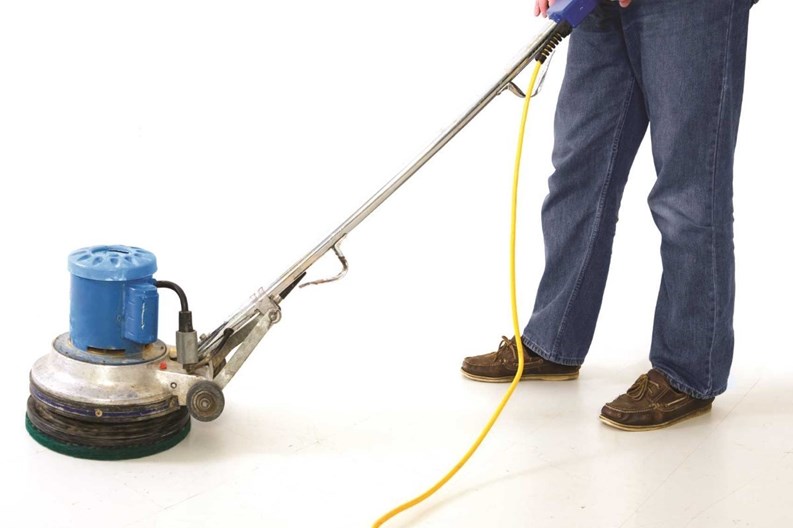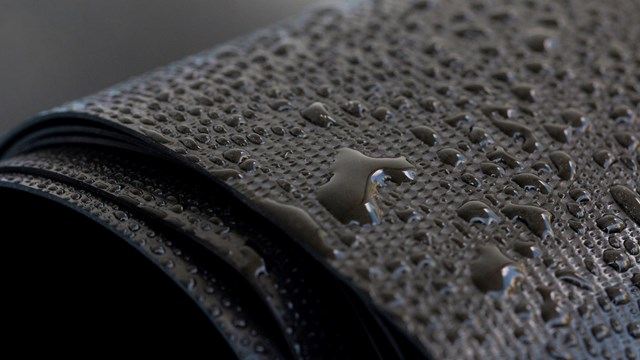If you want to make a good impression, nothing quite says luxury and elegance like a vast expanse of polished marble—particularly in the lobby of an upscale condominium or co-op building. Marble has been used in palaces, temples, and homes for thousands of years, and is prized for its beauty, durability, and variety of colors and patterns. Stone floors need maintenance, however, and knowing what they need can make them look better and last longer.
Uniquely Marbled
Some of the first marble floors were created and installed in ancient Rome. King Louis XIV filled Versailles with it, Michelangelo carved David from it, and Shah Jahan used it to build the Taj Mahal—but why? In short, marble is beautiful—and it lasts. Few natural materials have its longevity and versatility, and its wide variety of colors and veining patterns give marble personality and mystique. Formed from the metamorphosis of carbonate rocks (primarily limestone), marble may be more expensive than other flooring options but it lasts longer and is actually easier to maintain than something like hardwood.
“It’s extremely in demand,” says John Palomba of Restoration Specialty Services in Manhattan. “I would say that 90 percent of lobbies in Manhattan have at least some marble. When you walk into a lobby and there’s marble, it gives you this pristine feeling—and residential buildings are looking for a pristine lobby.”
“There’s a plethora of different colors and many patterns,” Palomba continues. “There’s white, green, red, yellow, beige, black, pink; the whole spectrum.” Different architects and designers can easily find the hue and veining pattern that best suits their design, or the taste of their client.
“Usually the marble is installed as tiles,” Lina Gottesman, vice president of the trade organization Professional Women in Construction (PWC) and president and owner of Altus Metal, Marble & Wood in Long Island City. “There are various sizes. Some very large lobbies will use a very big slab—maybe 55-x-100 inches—but that is a much more expensive way to install.”
“Obviously, if the tile is thinner, it’s less expensive,” adds Palomba. “Typically [a tile is] three-eighths of an inch thick, up to 18-x-18 inches across and a half-inch thick… it won’t be any larger than that. Then you have the three-quarter-inch slab, or one-and-a-quarter-inch slab that can be cut to any size. It all depends on what the architect specifies.”
Stone Spectrum
“Stone is classified with letters from A to C,” he explains, “and stone more suitable for flooring material would be an A or B. It’s not that C is a bad stone—it’s just that it has more natural fissures in the stone and wear-and-tear by foot traffic can upset those fissures. Typically your more veiny and colorful stones are Class C.”
“There are all kinds of marble ranging from very soft to much harder marble,” adds Gottesman. “It depends on their composition. Some marble is very solid, while other types have sand veins running them, which tends to make them bad for flooring. All those veins really add to a delicate marble’s beauty, but when walked upon over time, the veins will start to crack. We recommend that kind of marble for walls, where there isn’t hard pressure being applied to the sand veins.”
Marble has some close cousins that can play a similar role in residential buildings. “There is actually a lot of marble, a lot of limestone, and a lot of granite throughout the city,” says Gottesman. “Of those, limestone is the softest. It has a high lime content—obviously, given its name—which reacts to acids and has to be cared for in a certain way. It can’t tolerate very harsh acids.”
“Marble is a mixture of sand and limestone,” Gottesman continues. “It’s a little bit harder than limestone, but it still reacts to acids because of the lime content. So you have to be careful how you use acidic polishes, and know how to use them on marble.”
Granite, she adds, is a different type of stone entirely. It only contains a tiny amount of lime and is the hardest stone used as a building material. “Granite has to be treated very differently, because it won’t react to acids like marble and limestone will,” she says. “We have to use a totally different process to care for granite.”
Although polished granite may be a very hard surface, and does resist scratching and pitting better than marble and limestone, when it does get scratched, it has to be diamond-ground, honed, and polished—which is an expensive process. “And,” notes Gottesman, “you can never really get it as shiny as the factory finish because we just can’t apply enough pressure to the flooring to actually polish it. We have to use abrasives like diamond pads with weights on top of the machine. It’s a little more costly. Sometimes, it’s better in the long term to use a honed granite surface as opposed to a polished one, because it does get very costly to keep a polished granite floor shiny over the years.”
There are other options besides the big three, of course—some of which can lend a lobby or hallway the luxe look of marble without hitting the building quite so hard in the pocketbook.
“In general, marble is more expensive than most materials,” says one Manhattan-based maintenance pro, bringing up one of marble’s few real drawbacks as a building material. “Laminate and veneers can be much cheaper. Another option is terrazzo, which is a combination of cement and marble chunks, and can be made to the customer’s specifications.”
Care & Costs
In addition to its aesthetic merits—and despite the limitations of some of the more delicate varieties—marble is considered a very durable material. The frequency and type of maintenance it needs depend on where it’s installed, the wear and tear that it’s subjected to on a daily basis, and how glossy you want keep it.
For the typical marble floor, try to use cleaners with a neutral pH, since acidic or alkaline cleaners will eventually affect the material, says Gottesman. “In between actual diamond grinding, sanding, honing, and polishing, when the areas get totally scratched up, the best care is really the simplest: a clean mop, with a low concentration of ammonia—maybe one cup per five gallons of water. That will lift dirt and grease, but won’t affect the shine of the marble.”
Since a highly-polished marble can scratch, Gottesman says that if a building wants a very shiny, clean appearance it’s important to have a professional come in routinely for sanding, honing, and polishing to maintain a mirror finish and buff out particularly deep cracks.
A professional stone-care company will generally first sand a floor to remedy the deepest scratches, using a diamond grinding pad like the one Gottesman mentions above. After that, fine screens are used to perfect the surface. Once that’s done, an acid solution and a superfine polishing wheel are applied to get the sought-after mirror finish on the very top surface of the marble.
Another concern for marble floors is etching, when an acidic liquid spills, creating a dull, whitish spot. Etching is not related to the absorbency of the marble (it is rather low anyway) but rather to the chemical makeup that spurs the reaction with the acids, explains Marble Glow. They add that a light etch and those on polished marble can be fixed with a polishing compound and terry cloth, but etching on honed marble will require the help of a professional.
White or light colored marble is also susceptible to yellowing which can be caused by dirt and grime build-up, the yellowing of waxes and coatings or due to the natural oxidation of iron within the stone. Yellowing caused by dirt or wax can be cleaned with an alkaline cleaner or wax stripper but is a job best left to experienced professionals, says Marble Glow.
The frequency of a maintenance program depends on the stone, the finish, and the traffic it receives, says Palomba. “Usually maintenance is scheduled for quarterly re-polishing and re-honing of surface scratches. That’s with marbles and limestones. If they use granite, it needs to be re-polished maybe every six months or once a year for heavy traffic areas.”
Marble floors require a little extra TLC at certain times of the year, says Gottesman. “It’s especially important during winter months to protect marble and limestone from the products that we use to melt snow, as those products can truly damage the surface.”
Polished & Posh
Stone can get stained if people use inappropriate cleaning solutions, and that can be very costly to repair, but one of the greatest features of marble is its ability to be restored. Even old floors can be brought back to life. “Marble will come out to a beautiful finish that looks new.”
“With very old marble, we find that we need to add one extra step in the process,” adds Gottesman. “We need to add a step called poulticing, where we diamond grind [the marble surface] to get as much of the top layer off—to open up the pores, so to speak. We then apply a clay-like mixture with bleaching agents (called a poultice) to the marble with a trowel. Then we cover it up for 48 to 72 hours. It works sort of like a clay mask that you would put on your face, and it draws out impurities. We apply this poultice mixture, cover it up, and let it draw out as much of the stain as possible. Then we come back in two to three days and remove it, then hone and polish that surface. And that process will generally give the best results for old, stained marble.”
Despite its special needs, marble remains a material for the ages. “I’ve been in this business 28 years,” says Palomba, “and I’m restoring marble floors that were installed at the turn of the century. So they can last for some time. A lot of lower Manhattan has floors that were put in somewhere between 1900 and the 1920’s. They’re still there.”
Denton Tarver is a freelance writer and a frequent contributor to The Cooperator. Editorial assistant Maggie Puniewska contributed to this article.







Comments
Leave a Comment